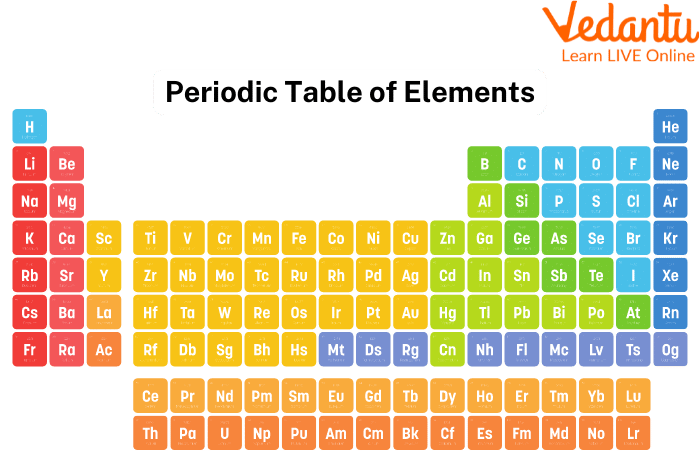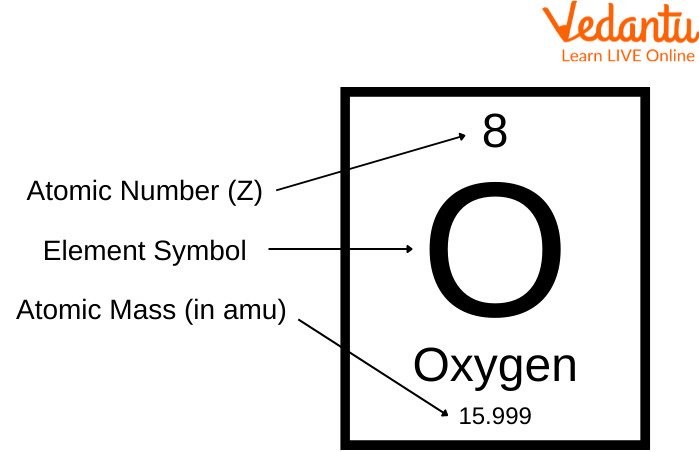




What is the Periodic Table?
The ordered arrangement of all chemical elements in order of increasing atomic number—that is, the total number of protons in the atomic nucleus—is known as the periodic table or the full periodic table of the elements.
The "periodic law," which describes a recurring pattern in which elements in the same column (group) have comparable properties, is present when the chemical elements are grouped in this way. Dmitry I. Mendeleyev's original discovery, which was made in the middle of the 19th century, has had immeasurable significance for the advancement of Chemistry.

Periodic Table Elements
Significance of the Atomic Number
An atomic number is equal to the total number of protons in an atom. The fact that the order of elements in the periodic system is determined by their atomic numbers, the integers of which is equivalent to the positive electrical charges of the atomic nuclei represented in electronic units, was not truly understood until the second decade of the 20th century.
Better Knowledge about Periodic Table
In the years that followed, significant advancements were achieved in our understanding of how the electrical structure of atoms and molecules relates to the periodic law. The legislation, which stated the only relationship between the elements that were known at the time it was written, has gained more importance as a result of its clarification and is still widely used today.
The skill of differentiating between chemical substances saw rapid development in the early 19th century, which led to the accumulation of a great body of information about the chemical and physical characteristics of both elements and compounds.

Oxygen Atom
Facts about Periodic Table
The Periodic table now contains a total of 118 elements. Here are some facts about the periodic table.
Hydrogen (H) is the first element and oganesson (O) is the last element (Og).
The first Periodic Table was produced by Russian chemist Dmitri Mendeleev. The contemporary Periodic Table groups elements with increasing atomic numbers as opposed to Mendeleev's table, which arranges elements according to their rising atomic weight.
The Periodic Table is controlled by the International Union of Pure Applied Chemistry IUPAC.
The element that is most prevalent in the universe is hydrogen (H). It accounts for roughly 75% of the entire observable cosmos.
The second most prevalent element in the universe is helium. Over 99% of the observable universe is made up of hydrogen and helium.
The first element to be created artificially was technetium (Tc). In 1937, it was first synthesised.
All the periodic table element symbols are missing one letter: J.
The most recent names of the four elements are 113, 115, 117, and 118. Nihonium (Nh), Moscovium (Mc), Tennessine (Ts), and Oganesson were authorised as the names and symbols for these elements by the International Union of Pure and Applied Chemistry on November 28, 2016. (Og).
The systematised literature of Chemistry as well as the laboratory arts by which chemistry is transmitted as a living science from one generation of chemists to another are based on the classification of chemical knowledge, which soon became necessary due to the rapid expansion of chemical knowledge.
Which superhero is your favourite? Thor, the Nordic god of thunder, is the name of the element thorium (Th).

Thor and Thorium
Conclusion
The periodic table appears to be incredibly complicated at first. In actuality, it is a huge grid that contains every element that exists. By atomic number, the elements are organised in descending order. The number of protons in an atom's nucleus is known as the atomic number.
The elements are arranged in such a way that those with comparable qualities (properties) are grouped. The periodic table features columns that run up and down and rows that run left to right, just like any other grid. The columns are known as groups, and the rows are known as periods.
FAQs on Periodic Table Facts
1. What is the period law?
The "periodic law," which describes a recurring pattern in which elements in the same column (group) have comparable properties, is present when the chemical elements are grouped in this way. Dmitry I. Mendeleyev's original discovery, which was made in the middle of the 19th century, has had immeasurable significance for the advancement of Chemistry. The Periodic table now contains a total of 118 elements according to period law. Periodic law helps us to understand that the chemical and physical characteristics of elements are predictable.
2. What is the significance of the atomic number in the periodic table?
Some of the elements in the Mendeleyev and Lothar Meyer periodic tables of 1871 nevertheless required their qualities to be put in positions that were somewhat outside the order of atomic weights, despite the modifications made by the redetermination of atomic weights. For instance, the first element had a higher atomic weight but in an earlier position in the periodic table in the pairs of argon and potassium, cobalt and nickel, and tellurium and iodine. Only once a deeper understanding of atomic structure was attained was the answer to this puzzle discovered.









